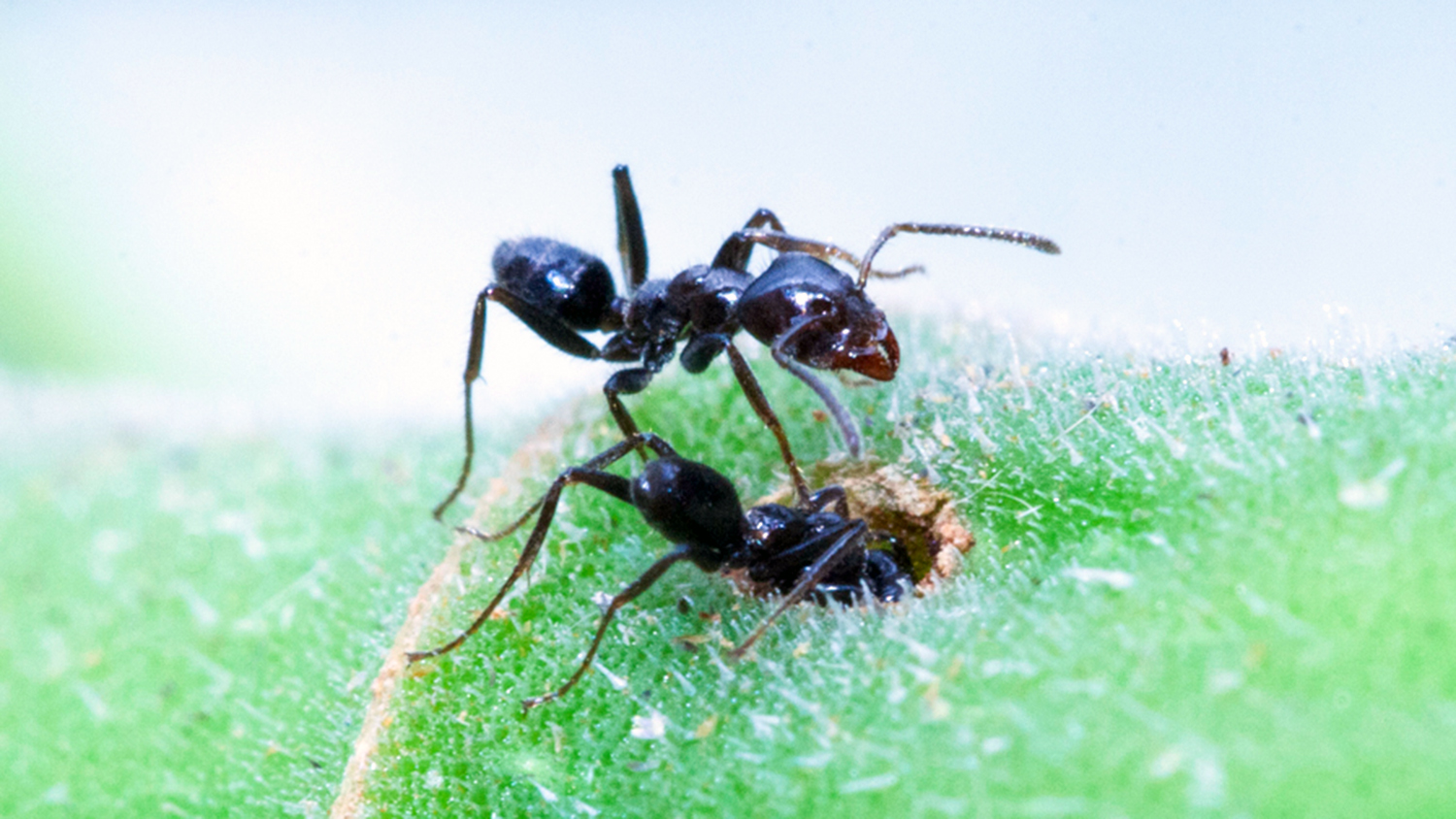For at Least One Species, Ant Nurseries Are Cleaner Than Human Ones

Editor’s note: This is a guest post by Michelle Jewell, chief science communicator for NC State’s Department of Applied Ecology.
Azteca ants are better at limiting pathogenic microbes in their nurseries than humans, according to a new study. The research also found that the microbial make-up – or microbiome – of ant colonies varies from chamber to chamber, much like the microbiome differences we see from room to room in human homes.
The microbiome of each human dwelling is unique to its inhabitants, and the microbiome of each room is unique to the purpose of the room. For example, not only is the microbiome of your bathroom (hopefully) different from the microbiome of your kitchen, but the microbiome of your kitchen is distinct from the microbiome of your neighbor’s kitchen.
These microbiomes can have positive and negative effects on our health, and humans actively influence the microbial community of our dwellings with a range of techniques, from using anti-bacterial cleaning products to taking probiotics.
We now know that ants also have unique microbiomes, both from colony to colony and even between chambers within a single colony. A team of researchers, including Rob Dunn, a professor in NC State’s Department of Applied Ecology, examined Azteca ant colonies in Trumpet trees (Cecropia peltata). Azteca ants utilize the naturally segmented stalks of Trumpet trees as separate rooms to rear young (brood chambers), store food (carton chambers), and take breaks (worker chambers). Like us, ants actively influence the microbial communities of a room by doing things that favor good microbes and suppress the bad (think of this as good housekeeping).
In fact, Azteca ants are much better than us at suppressing potentially harmful microbes in their brood chambers, which are the equivalent to our daycare centers. This may be due to the structural changes ants make to brood chambers and their intense cleaning rituals.
“Ants have been living in homes for more than a hundred million years,” Dunn says. “During that time, they’ve figured out a thing or two about making a nice apartment. This work, led by Jane Lucas, gives us a glimpse into the housekeeping of one tropical ant species. And that housekeeping appears, at least given the evidence to date, to be more microbially sophisticated than anything we do in our human homes.”
The manuscript, “Azteca ants maintain unique microbiomes across functionally distinct nest chambers,” was published in Proceedings of the Royal Society B on August 7. First author of the paper is Jane Lucas of the University of Idaho. The paper was co-authored by Anne Madden and Daniel Fergus of NC State’s Department of Applied Ecology; Clint Penick of Kennesaw State University; Peter Marting of Arizona State University; Mary Jane Epps of Mary Baldwin University; Julia Stevens of Bayer Crop Science Division; and Emily Meineke – an alum of NC State’s Department of Entomology and Plant Pathology who will begin an assistant professorship at the University of California, Davis in 2020.
- Categories:


